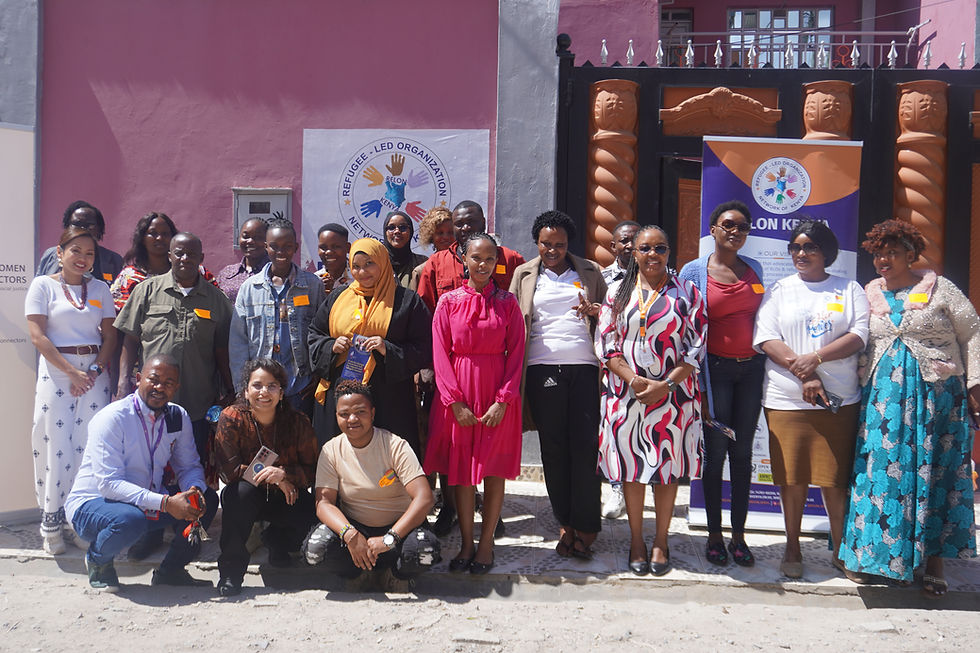EUAA Asylum at a Crossroads: Critical Reflections on the 'State of Asylum' Conference
- Communication NWC
- Jul 22
- 4 min read

On June 18th, 2025, New Women Connectors' Founder and Managing Director, Anila Noor and Program Coordinator Angeline Green were in Valletta, Malta, for the European Union Agency for Asylum’s (EUAA) annual “State of Asylum” Conference. As the EU prepares for the implementation of its Migration and Asylum Pact in June 2026, the panel discussions of this event shed light on the shifting narratives and policy directions guiding its path forward. What became clear is that while the EU’s focus is on regulation, efficiency, and trust-building, the voices of those most affected, namely migrants, refugees and asylum seekers, remain secondary to bureaucratic and security-centred approaches.
The conference spanned only the day of the 18th and comprised three panels, of which the NWC team attended the first two. The first panel, “Migration and Asylum at a Crossroads: Where do we go from here?’’, tackled the urgent need for differentiated approaches to migration. People experience migration differently, yet EU policy continues to grapple with applying a one-size-fits-all framework. Despite a reported decline in irregular border crossings over the last year1, the EU continues to center its strategy on reducing what it calls “false asylum claims” and bringing up return rates for those with a negative asylum decision. The success of the pact, as defined by many panelists, came down to numbers: faster decisions, more returns, fewer claims. Yet, this risks treating people not as individuals with rights, but as metrics to be managed. This framework not only oversimplifies complex realities but also opens the door to harmful generalizations.
The second panel, “EU Working Together - Stepping up EU Migration and Asylum Management in the face of mounting European and international challenges”, explored coordination among EU member states, the judiciary’s capacity, and the role of supranational organizations like IOM and UNHCR. The emphasis was again on efficient processing, managing returns, and building relationships with “safe third countries” (an externalization policy based on the idea that some migrants should not be granted protection in the country where they apply for it, and should be transferred to a different country where they get that protection instead2) to help hold some of the incoming asylum seekers outside of Europe.
Calls to view refugees as contributors, not just beneficiaries, were made, particularly in relation to labor markets and economic development. This was challenged by troubling statements made by Michael Spindelegger, Director General of the International Center for Migration Policy Development, suggesting that employment opportunities for asylum seekers “incentivize” false asylum claims. Amidst a greater conversation by panelists on the need for public trust in the EU Migration Pact’s implementation, how should we expect that this trust comes in a form that does not stigmatize or frame asylum seekers as a financial burden on EU countries?
If, in Spindelegger’s view, asylum seekers should be denied access to the labor market, what options do they have to be self-sufficient? This opinion perpetuates the harmful far-right narrative that asylum seekers are taking advantage of Europe’s perceived wealth. Such logic risks dehumanizing people seeking safety, undermining the legitimacy of those who do qualify for protection, and further entrenching dangerous and negative narratives of refugees as passive beneficiaries of government assistance.
After this panel, Anila Noor made a powerful intervention as a member of the audience. She asserted that the lack of refugee participation in such panel discussions is part of the problem - the lack of refugee participation and voices was actively hindering the sustainability of solutions, and the quality of discussion taking place at the conference. In speaking to the panel, which consisted of high-level representatives from EUAA, UNHCR, IOM, the European Commission, and the Council of the European Union, she argued:
“I am really disappointed by the discussions, since the start of the conference. You are setting the agenda, having discussions, speaking about issues about us, without us. Why are we not part of these discussions? We, as refugee leaders, as displaced people, we have the knowledge, the lived experience and the expertise to contribute to these conversations and to solutions.”
In the end, many key elements were missing from the conference - the perspectives and participation of refugees and asylum seekers, critical reflections on the ethical responsibility of policymakers when it comes to asylum management , and on the definitions of a “successful” EU Migration Pact. If the “success” of the EU Migration Pact hinges upon lowering asylum numbers, we risk losing sight of the individuals who seek protection, their stories, and the values of protection and dignity that should lie at the heart of Europe’s asylum framework. The EU Migration Pact only serves to buttress Fortress Europe, threatening the safety and human rights of people who seek international protection.
Written by Angeline Green, New Women Connectors.
1 EUAA, Asylum Report 2025, June 2025.
2 Radjenovic, Anja. Safe Third Country Concept in the EU Pact on Migration and Asylum, European Parliamentary Research Service, Dec. 2024.





_edited.png)

Comments